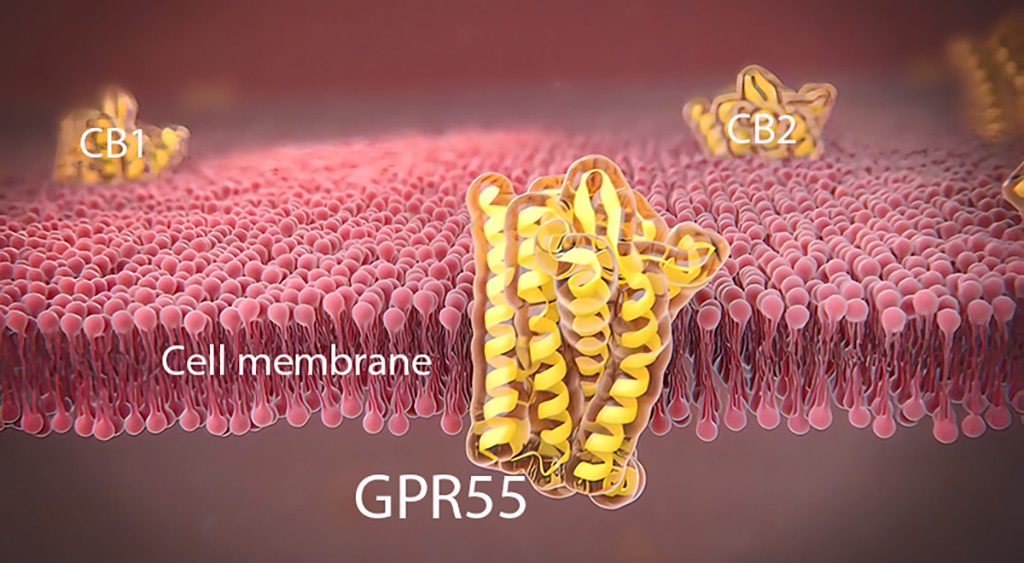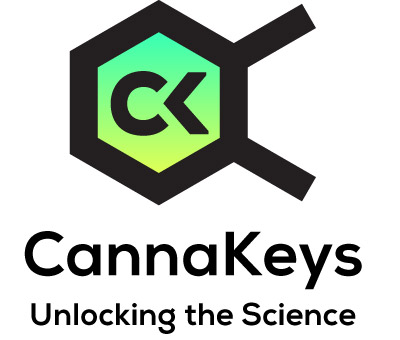
Research activities have long hinted at the possibility of new endocannabinoid receptor sites awaiting their discovery (M. Begg et al., 2005).1
GPR55 (proposed CB3?)was initially considered an orphan receptor because of structural similarity between other receptors but whose endogenous ligand had yet to be identified.
The History of GPR55
Human G protein-coupled receptor GPR55 was first identified and cloned by a team of researchers at the University of Toronto. The gene for GPR55 was associated with chromosome 2q37. Its mRNA transcripts were detected in the brain, i.e., the caudate nucleus and putamen (M. Sawzdargo et al., 1999).2 Later research found that GPR55 is also expressed in tissues of the testis, spleen, lymph nodes, thymus, and the small and large intestines (T. Tanikawa et al., 2022).3
GPR55 is a seven-trans-membranal G-protein-coupled receptor site (National Institute of Health, 2023).4
Human GPR55 exhibits low amino acid similarity to CB1 (13.5%) or CB2 (14.4%) receptor sites (H. Sharir et al., 2010).5
By 2006 a UK-based team of researchers suggested that GPR55 might represent a new cannabinoid receptor (D. Baker et al., 2005).6
By 2007 a Swedish team from AstraZeneca research and development discovered that anandamide (AEA), virodhamine (O-AEA), and the synthetic cannabinoid CP55940 activate GPR55 in the nM range. In addition, cannabidiol (CBD) and abnormal cannabidiol (ABN-CBD) also activate GPR55. The authors posit that GPR55 is a novel endocannabinoid receptor (E. Ryberg et al., 2007).7
Various cannabinoids, such as THC and AEA, activate GPR55 resulting in increases in intracellular calcium (Ca2+) (J. Lauckner et al., 2008).8 More specifically, later study results found that GPR55 activation by LPI induces extracellular signal-regulated kinase (ERK) and a temporary increase in intracellular calcium (Ca2+)(T. Tanikawa et al., 2022).9
Endnotes:
1. Begg M, Pacher P, Bátkai S, Osei-Hyiaman D, Offertáler L, Mo FM, Liu J, Kunos G. (2005 May) Evidence for novel cannabinoid receptors. Pharmacol Ther. 106(2):133-45.
2. Sawzdargo M, Nguyen T, Lee DK, Lynch KR, Cheng R, Heng HH, George SR, O’Dowd BF. (1999 Feb) Identification and cloning of three novel human G protein-coupled receptor genes GPR52, PsiGPR53 and GPR55: GPR55 is extensively expressed in human brain. Brain Res Mol Brain Res. 64(2):193-8.
3. Takashi Tanikawa, Saori Oka, Keisuke Nakajima, Yasuhiro Hayashi, Yoko Nemoto-Sasaki, Yoichiro Arata, Takayuki Sugiura, Atsushi Yamashita. (2022) Expression and Distribution of GPR55, a Receptor for Lysophosphatidylinositol, in Mouse Tissues and Cells. BPB Reports 5, 16-20.
4. National Institute of Health, 2023. Retrieved January 30, 2023. https://www.ncbi.nlm.nih.gov/gene?Db=gene&Cmd=ShowDetailView&TermToSearch=9290
5. Sharir H, Abood ME. (2010) Pharmacological characterization of GPR55, a putative cannabinoid receptor. Pharmacol Ther. 126(3):301-13.
6. Baker D, Pryce G, Davies WL, Hiley CR. (2006 Jan) In silico patent searching reveals a new cannabinoid receptor. Trends Pharmacol Sci. 27(1):1-4.
7. Ryberg E, Larsson N, Sjögren S, Hjorth S, Hermansson NO, Leonova J, Elebring T, Nilsson K, Drmota T, Greasley PJ. (2007) The orphan receptor GPR55 is a novel cannabinoid receptor. Br J Pharmacol. 152(7):1092-101.
8. Lauckner JE, Jensen JB, Chen HY, Lu HC, Hille B, Mackie K. (2008 Feb) GPR55 is a cannabinoid receptor that increases intracellular calcium and inhibits M current. Proc Natl Acad Sci U S A. 105(7):2699-704.
9. Wnorowski A, Wójcik J, Maj M. (2021 Dec) Gene Expression Data Mining Reveals the Involvement of GPR55 and Its Endogenous Ligands in Immune Response, Cancer, and Differentiation. Int J Mol Sci. 22(24):13328.

